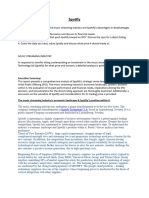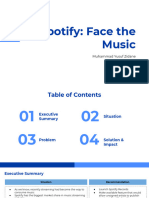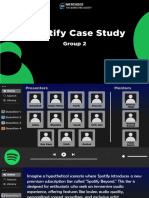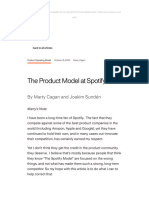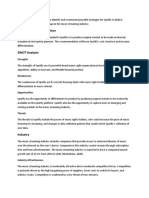0% found this document useful (0 votes)
95 views5 pagesSpotify Case Study
Spotify, launched in 2008, transformed music consumption with its freemium model but now faces challenges such as increasing competition, profitability issues, and artist compensation debates. This case study analyzes Spotify's internal strengths and weaknesses, external opportunities and threats, and offers recommendations for maintaining its competitive advantage. Key strategies include investing in AI for personalization, strengthening artist relations, diversifying revenue streams, and embracing emerging technologies.
Uploaded by
mervzmatz36Copyright
© © All Rights Reserved
We take content rights seriously. If you suspect this is your content, claim it here.
Available Formats
Download as DOCX, PDF, TXT or read online on Scribd
0% found this document useful (0 votes)
95 views5 pagesSpotify Case Study
Spotify, launched in 2008, transformed music consumption with its freemium model but now faces challenges such as increasing competition, profitability issues, and artist compensation debates. This case study analyzes Spotify's internal strengths and weaknesses, external opportunities and threats, and offers recommendations for maintaining its competitive advantage. Key strategies include investing in AI for personalization, strengthening artist relations, diversifying revenue streams, and embracing emerging technologies.
Uploaded by
mervzmatz36Copyright
© © All Rights Reserved
We take content rights seriously. If you suspect this is your content, claim it here.
Available Formats
Download as DOCX, PDF, TXT or read online on Scribd
/ 5











































